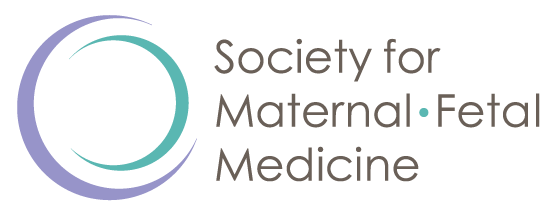
Fibroids in Pregnancy
Uterine fibroids are the most common benign (not cancerous) muscle growths that develop within the uterus. They are found in up to 11% of people during pregnancy. Fibroids are also called “leiomyomas” or “myomas.” Fibroids can range in size from a pea to a grapefruit. Fibroids can be found during a physical exam or by ultrasound. Fibroids are more commonly seen in people older than age 35 and those of African ancestry.
Fibroids can grow within the wall of the uterus, inside the uterus, or be attached to the uterus by a stalk.
-
Although most people with fibroids will not have trouble getting pregnant or staying pregnant, sometimes fibroids cause problems. Having fibroids during pregnancy is associated with an increased risk for complications such as fetal malpresentation (fetal body position that is not “head down”), preterm labor and preterm birth, placenta previa, placental abruption, cesarean delivery, and postpartum hemorrhage. Babies born to people with large fibroids may weigh less at birth than babies born to people who don’t have fibroids.
-
Some studies have noted that adverse outcomes are more common when fibroids are larger than 10 centimeters. Other studies found that the number of fibroids and their location within the uterus did not affect adverse pregnancy outcomes.
-
Fibroid growth may be affected by changes in pregnancy-induced hormone levels and blood flow patterns within the uterus. Fibroids larger than 5 cm are more likely to grow during pregnancy. Most fibroid growth occurs in the first trimester. Sometimes, fibroids present early in pregnancy go away or shrink by the time the baby is born.
-
Fibroid-related pain occurs in up to 15% of patients. Mild to moderate pain can usually be controlled with acetaminophen. For more severe pain, nonsteroidal anti-inflammatory drugs (NSAIDs) like ibuprofen or indomethacin (Indocin) can be used for a short time. NSAIDs usually work quickly to relieve pain within 48 hours. There is minimal risk to the fetus with NSAIDs if they are taken before 32 weeks of pregnancy. Tell your healthcare professional if your pain has not improved after 48 hours of medical treatment.
-
The major risk of pregnancy following myomectomy (surgical removal of fibroids) is uterine rupture either during or before labor. This risk will depend on the size of the uterine incision(s) and the size, location, and number of fibroids removed.
If you have had a myomectomy, your healthcare professional will review your records from the surgery to determine the safest delivery plan. A detailed ultrasound exam may be recommended in the second trimester to check the placenta’s location because a prior myomectomy can increase the risk of abnormal attachment of the placenta to the uterine wall. The best way to deliver your baby and the delivery timing will be decided based on the type and extent of your prior surgery, ultrasound exam findings, and other factors.
Quick Facts
Uterine fibroids are benign (not cancerous) muscle growths that develop within the uterus.
Having fibroids may be associated with certain pregnancy complications. Most people will not have any problems caused by fibroids during pregnancy.
About 60% of fibroids will grow or shrink by over 10% of their original size during pregnancy.
Talk to your healthcare professional if fibroids cause pain during pregnancy. Most pain from fibroids can be managed with acetaminophen.
If you have had a myomectomy (surgical removal of fibroids), your healthcare professional will review your records from the surgery to determine the safest delivery plan.
Glossary
Cesarean delivery: Surgery in which a baby is delivered through a cut (incision) in the mother’s uterus.
Fibroid: A noncancerous growth that develops in the muscular wall of the uterus.
Malpresentation: A condition in which the top of the head is not the first part facing downward in the birth canal before birth.
Myomectomy: Surgical removal of fibroids.
Placental abruption: A serious complication of pregnancy in which the placenta separates too early from the uterus. It usually occurs in the third trimester or during childbirth. Symptoms include pain in the abdomen and vaginal bleeding.
Placenta previa: A condition in which the placenta grows too low on the wall of the uterus so that it covers the cervix. It can cause severe, painless bleeding when the cervix begins to dilate (open) late in pregnancy.
Postpartum hemorrhage: Very heavy bleeding that occurs within 24 hours of childbirth and can be life-threatening.
Preterm: Delivery of a baby before 37 weeks of pregnancy.
Ultrasound: Use of sound waves to create images of internal organs or the fetus during pregnancy.
Last Updated: May 2024

